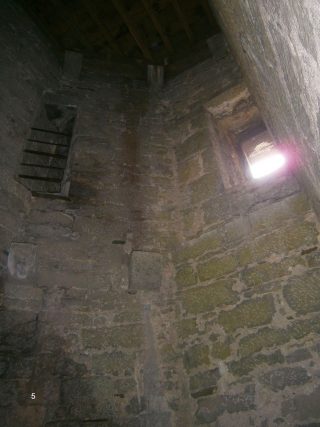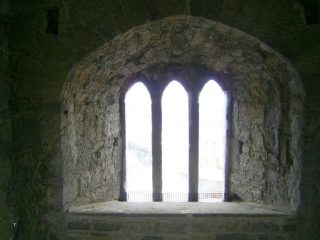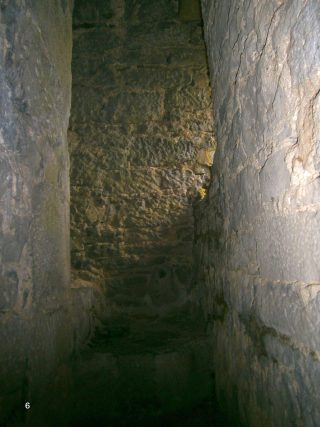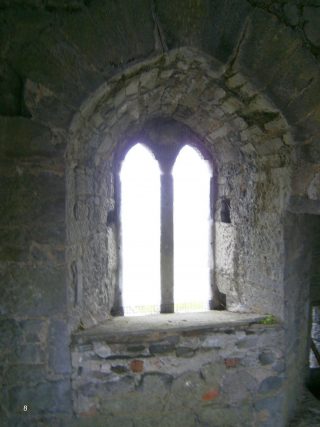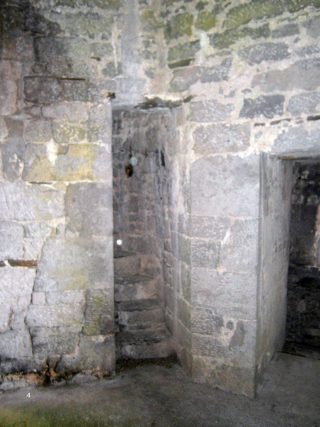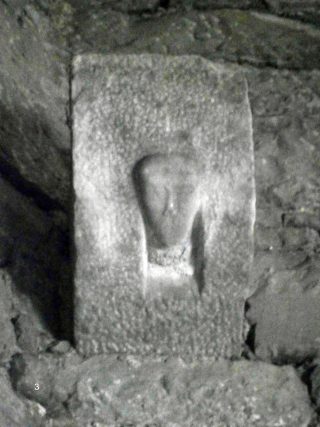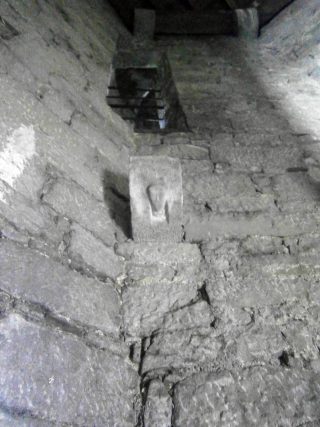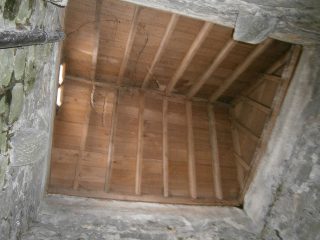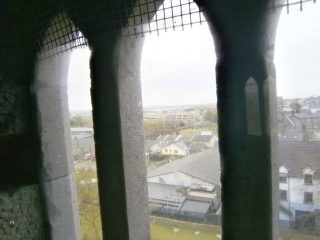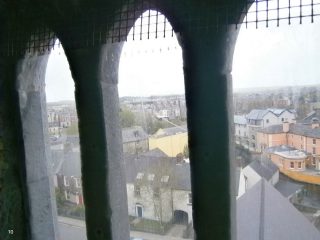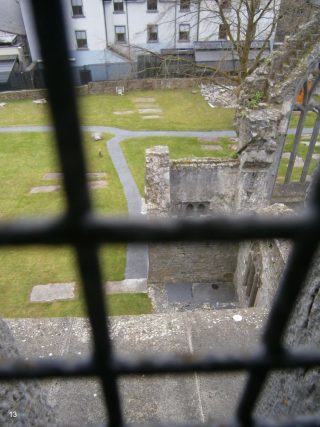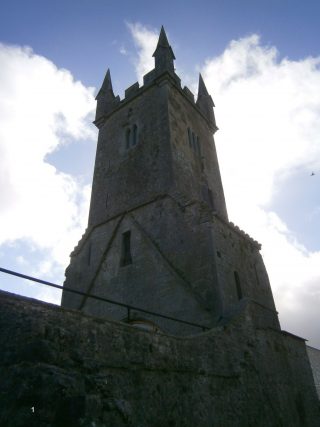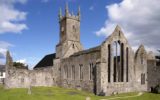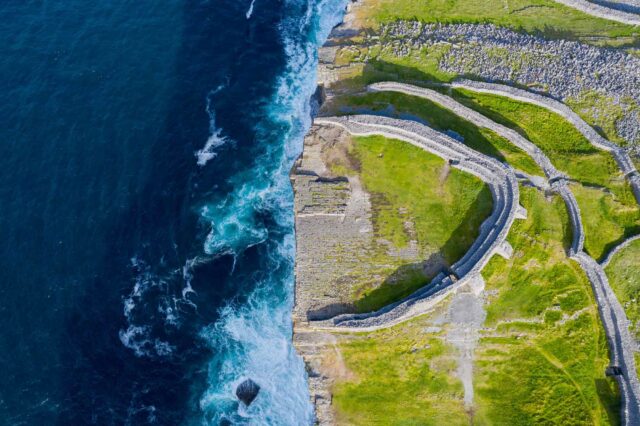The tower of Ennis Friary has been a feature of the skyline of the town for over 500 years. Dating from around 1450 the original tower was constructed within the walls of the 13th century chancel, supported by four large piers with fine punch-dressed ashlar facing. Above the roof-line the structure sloped inwards on haunches terminating in a tall narrow tower of three stages.
As the highest structure in the town up to the late 19th century it was prone to lightning strikes. We know of at least one definite strike and there is evidence for another.
It is fortunate that a number of drawings and sketches of the friary survive from dates prior to the arrival of local print media to the town. These images show us how the tower changed over time, though we can only speculate on reasons for those changes.
A drawing of the town in 1681 by Thomas Dinley shows the tower probably quite close to its original medieval form, with a crenellated parapet. By this time the Franciscans had been expelled from the site and only the nave remained roofed as it was adapted for use as an Anglican church. A print from c.1780 shows the tower in a similar form. However, an engraving by Cooper dating from 1784, just four years later, shows the tower greatly reduced in height, surviving only one stage above the haunches and capped with a low pyramidal-shaped roof. A later and more detailed engraving by Henry Pelham dating to 1793 shows the tower and its roof still in the same condition and style. The antiquarian T.J. Westropp suggested that the damage that occurred in the 18th century was as a result of a lightening strike, and he may have based this on local tradition.
There is no doubt about the second occurrence as it was recorded in the local newspapers of the time. The Ennis Chronicle of 22 February 1817 reported that: “Between three and four o’clock, yesterday morning, this town was visited by the most awful and tremendous thunder storm that is within the recollection of any person living here. It seems as if the electric cloud had descended very near the earth before it burst, as the report occasioned by the explosion was such as to defy description. The lightning struck the N.W. spire of the Steeple of our Church, the materials of which it scattered in various directions, and with inconceivable force. Stones of great magnitude were driven against the pier end of the bridge, and others carried over the Church enclosure, and thrown against the houses on the opposite side of Church Street, some were also dispersed over the pleasure grounds of Abbey View, Willow Bank etc. many of which exceed two hundred weight. A portion of the steeple fell on the roof, which yielding to its force and pressure, gave way, and in its descent destroyed the gallery, pulpit, and pews on that side of the aisle. All the glass of the great Eastern window has been broken, and a principal part of the Western end.” The Clare Journal of 24 February 1817 tells us that “The bell, which cost a short time since, over £80, was broken in a thousand pieces and found scattered in different directions.”
Sometime after this the tower was rebuilt and appeared very much like the form we see it today, but with four extra pinnacles on the haunches. It must have been well repaired by 1828, the year of election victory for Daniel O’Connell, campaigner for Catholic Emancipation. The votes were counted at the old courthouse in Ennis located in the Square where O’Connell’s statue stands today. In the days before Facebook and Twitter or even phones, bonfires were often a means of spreading news quickly across vast distances. To this end a huge bundle of hay was set alight on the tower of the friary, and lookouts on hills and mountains followed suit until the bonfires blazed across the county announcing O’Connell’s victory.
In 1839, on the “Night of the Big Wind” three of the pinnacles on the tower were blown off causing further headaches for the custodians and users of the site. Tired of repairs and maintaining an ancient building the Anglican community built a new church on Bindon Street where worship began in 1871. Only twenty years later the nave of Ennis Friary was in ruins. Around this time, a mineral water manufacturer at Lifford, located across the bridge from the friary C.J. Hassett adopted an image of the friary ruins as the trademark for his products. A southern view of the church and tower was embossed on all Hassett’s bottles and labels. The company ceased manufacturing in the 1960’s, but the iconic image of the tower and friary continues in use in business and tourism literature.
